Tokyo Exhibit Explores Love And The Asian Female Experience In Striking Ways
"I know something about love, asian contemporary photography" Is A Must-See Exhibition
This exclusive exhibition tells us about the many forms of love and experiences of living as a woman in Asia that we've perhaps never thought of before.
Running up until November 25th, The Tokyo Photographic Art Museum (TOP for short) in Ebisu is hosting I know something about love, asian contemporary photography, a powerful exhibition showcasing six of Asia’s most groundbreaking contemporary female photographers.
Representing Japan, China, Singapore, Taiwan, South Korea, and ethnic Koreans raised in Japan, the roster and background of artists are eclectic, but their themes are universal.
“Visually it may seem there is no uniformity, but in my mind love is a keyword that uniforms these works,” explains Michiko Kasahara, the event organizer.
View this post on Instagram
Self-love and invisible family unions
Thematically, the most immediately impactful photos come from Zhe Chen, a photographer who first snatched the limelight in around 2010 when at just 21 she released a photo series exploring self-harm. A selection of Chen’s most famous works which were later published as a photo book titled Bees & The Bearable (Jiazhazhi Press, 2016) are on display. The exhibit of Chen’s work runs like a concise anthology of her short but potent career.
This is arguably one of the most exciting contemporary photo exhibits on display for this half of 2018.
From almost accidental beginnings, Chen’s most discussed photos began as a personal collection of self-portraits taken after episodes of self-harm, which Chen would file in a junk folder on her computer. As she told GUP Magazine in an interview in 2017, “I never thought anybody would ever want to look at them. I only kept them because they looked beautiful to me.”
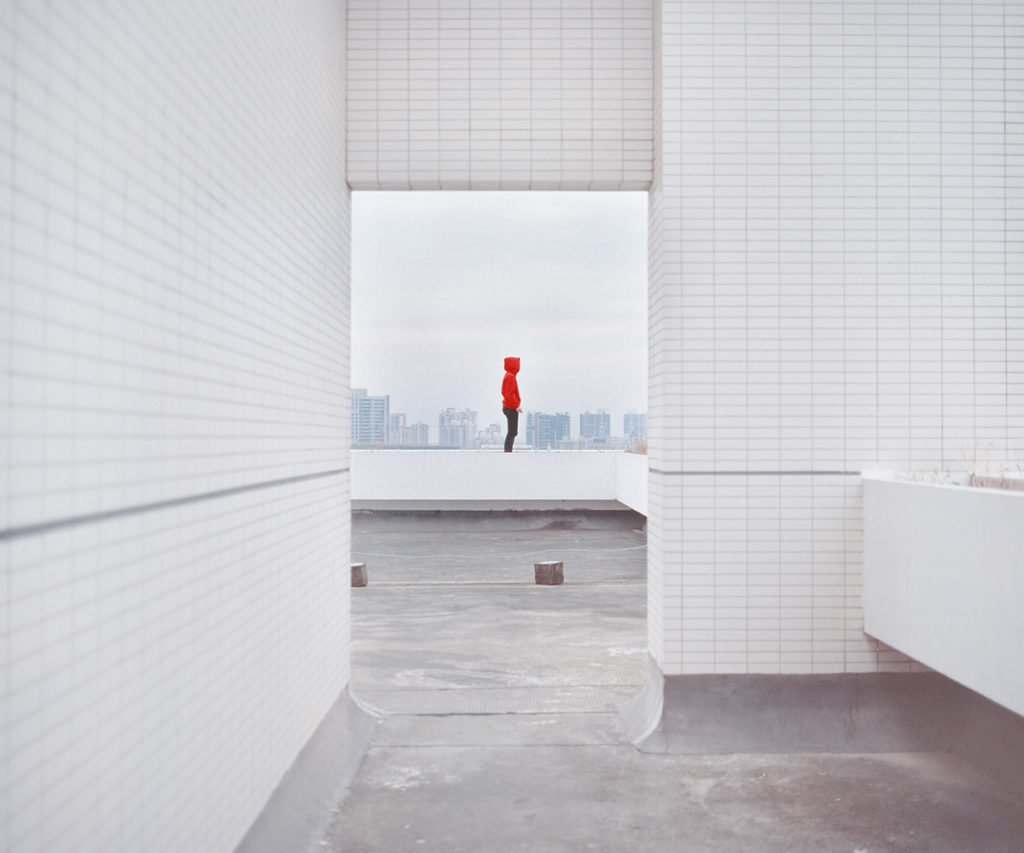 © Photo by Chen Zhe, Bees #065-01, from the series “Bees”, 2010 ©Chen Zhe
© Photo by Chen Zhe, Bees #065-01, from the series “Bees”, 2010 ©Chen Zhe
While studying at the Art Center College of Design in Los Angeles, she shared the works as part of a class assignment. The response to the images was a catalyst for Chen who in 2010 went back to China to work on a project documenting individuals who shared similar experiences. It’s a compelling exploration of how people find unity within the realms of personal darkness.
Another artist who uses photography to explore the unconventionality of human connection is Oksun Kim. Born in Korea in the late 1960s, her photo series Happy Together (2000–2004) positioned her as one of the country’s most fascinating photographers. Many of Kim’s photos in the exhibit are taken from this long-running series which explores the dynamics of interracial relationships. Taken in the domesticated backdrop of the subjects’ family homes, the images in the series document the mundanity of everyday life but at the same time features an almost masterpiece painting-like composition.
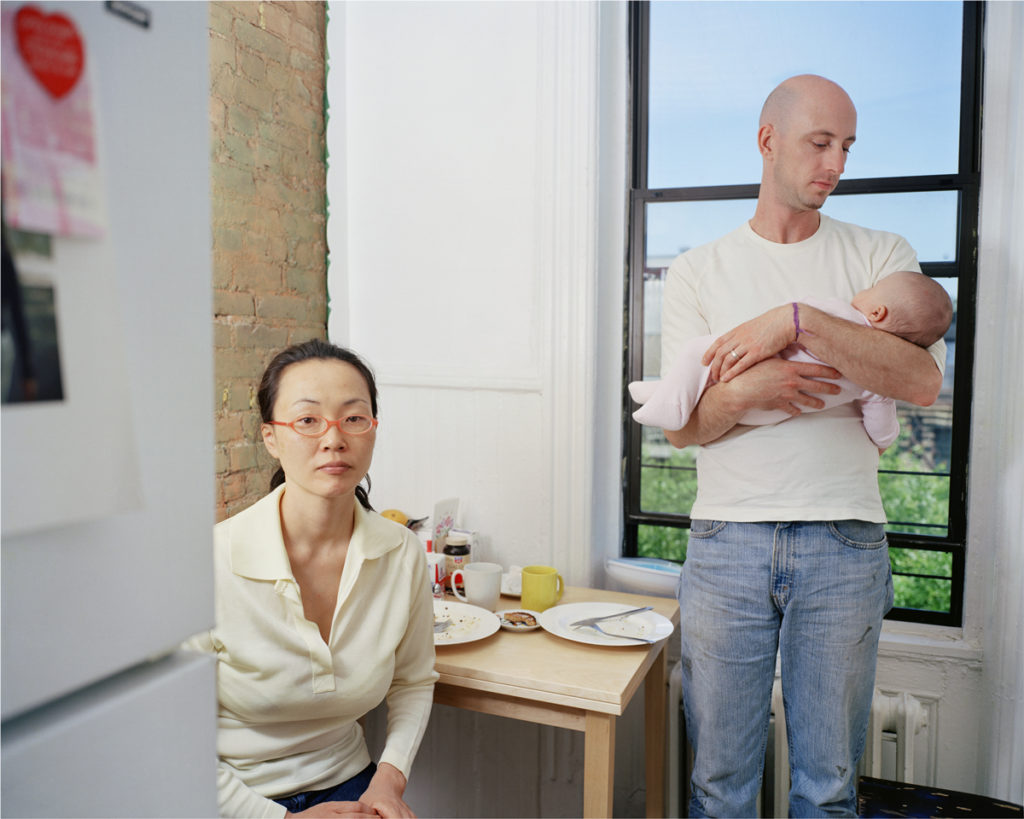 © Photo by Kim Oksun, Hiroyo and Michael 2, from the series “Happy Together”, 2004 © Oksun KIM
© Photo by Kim Oksun, Hiroyo and Michael 2, from the series “Happy Together”, 2004 © Oksun KIM
The lack of ambiguous statements, props and the unflinching regularity in her Happy Together images leaves a lot of subtexts for the viewer to create. It’s a fascinating exploration of contemporary romance. There are also selected images from No Direction Home (2009–2011) portrait series, documenting the foreigners who live in Kim’s hometown of Jeju Island. These images were inspired in part by her (German-born) husband’s experience as an obvious foreigner, but someone who stays a foreigner in the name of love.
From obvious foreigners to hidden ones
The work of Osaka-born, third generation Zainichi Korean photographer Insook Kim’s most recent series Saieseo: Between two Koreas and Japan (2008–) documents the ethnic Korean experience in Japan in an understated but powerful way.
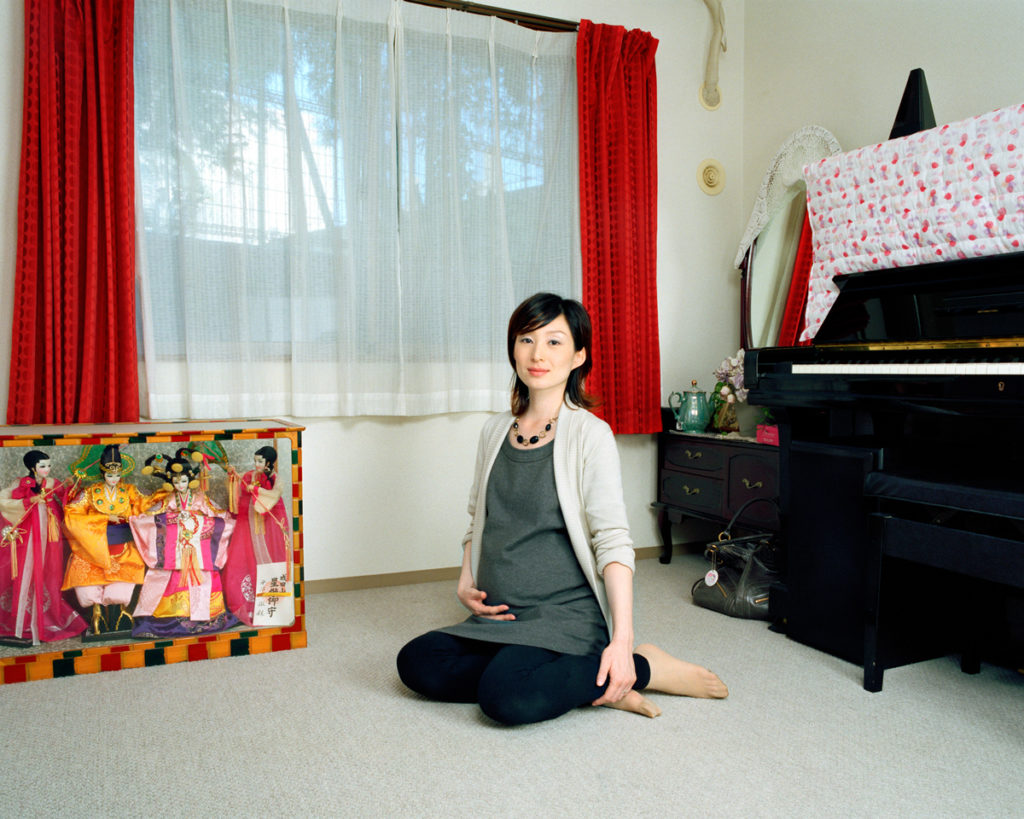 © Photo by Kim Insook, Son and I from the series “SAIESEO: between two Koreas and Japan”, 2008 ©Insook KIM
© Photo by Kim Insook, Son and I from the series “SAIESEO: between two Koreas and Japan”, 2008 ©Insook KIM
Zainichi Korean refers to those who have permanent residency status in Japan but are Korean by ethnicity. Many have histories in Japan dating back between 1910-1945 when Korea was still one unified nation and Japanese colonial period was in full effect. Drawing from her own personal experiences growing up in a country where her personal history was at best muddled and at worst an opportunity for discrimination, Insook is the perfect documentarian of the Zainichi experience.
Hailing from Singapore, Geraldine Kang’s work takes a whole different route through which she explores the family dynamic. As a way to push typical family boundaries to the point of almost discomfort, Kang’s series In The Raw depicts nudity and vulnerability not typically experienced as we mature. The childish nudity is a visual representation of what it means to be an adult, a child and an ‘adult child’ in a modern, multigenerational family.
 © Photo by Geraldine Kang, “8:33” 2010, from the series “In the raw”, 2010 ©Geraldine Kang
© Photo by Geraldine Kang, “8:33” 2010, from the series “In the raw”, 2010 ©Geraldine Kang
Kang’s images make us think about the role of nudity in art and intimacy looks at the roles typically adopted in a family setting. The inclusion of her non-blood related family member Fehri, their domestic helper, is a statement about what really is a ‘family.’
Taiwan-born Hou Lulu Shur-Tzy is another artist who explores questions of the commodification of romance. In her collection Border-crossing/Cultural Identities—Song of Asian Foreign Brides in Taiwan (2005, 2008, 2009) she explores the lives of women from Vietnam, Cambodia, Thailand and Indonesia who arrive in Taiwan as mail order brides.
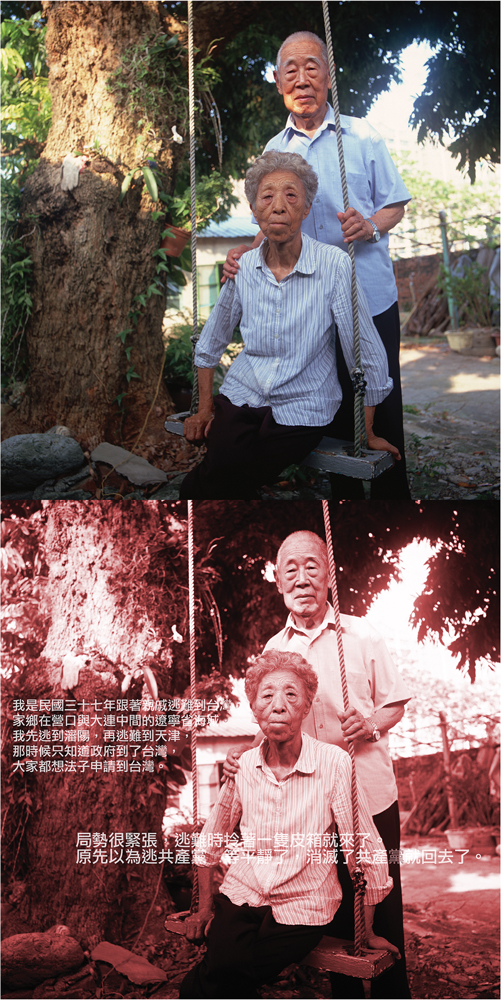
Hou Lulu Shur-Tzy, Shang Jiu-ju & Lu Duo 01 From “Episode 1: Here is where we meet (Lizhi New Village)” 2012 ©Lulu Shur-Tzy Hou
Throughout her career, Hou Lulu Shur-Tzy has investigated all facets of love, gender, identity, and ethnicity, championing the feminist movement in her home country, while still widening her artistic focus to also tell the story of broader social-political issues in Taiwan.
While most photographers prefer to be behind the lens, Osaka-born Ayano Sudo’s most powerful work sees her turn the lens on herself. While Zhe Chen’s intimate self-portraits were a discussion of self-harm, in her series Gespenster (2013–14), Sudo becomes someone else entirely. At first glance, the photos from Gespenster look benign enough, but the true story is far more sinister: Sudo has styled herself in the image of actual missing girls.
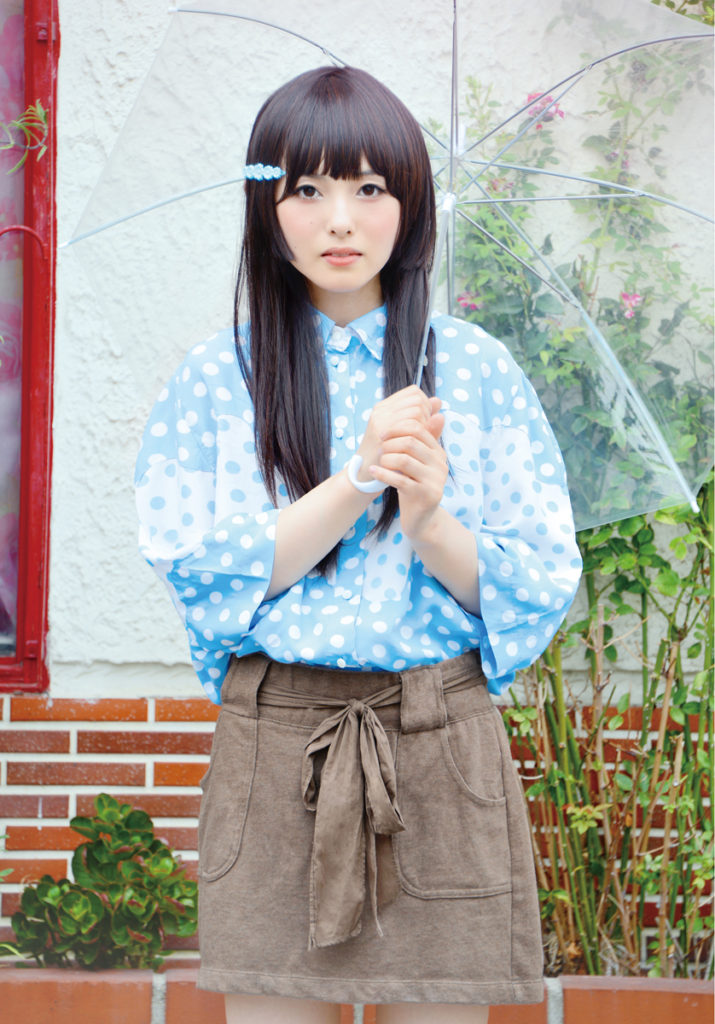 © Photo by Sudo Ayano, from the series “Gespenster”, 2013 ©Ayano Sudo / Courtesy of MEM, Tokyo
© Photo by Sudo Ayano, from the series “Gespenster”, 2013 ©Ayano Sudo / Courtesy of MEM, Tokyo
Every single day missing people, especially women go from being a living breathing human being to something else — an image and a statistic. Through her almost reincarnation-like adoption of these missing subjects, Sudo confronts her audience with a plethora of topics to explore: feminism, the value we put on human life, the never dying love we feel for our loved ones despite their lack of presence and desensitization to suffering being just a few.
Love and the female experience in all its forms, this is arguably one of the most exciting contemporary photo exhibits on display for this half of 2018. It’s on from now until November 25th, so if you do get a chance, be sure to check it out.
The Deets
I know something about love, asian contemporary photography
Where: 2F, TOP Museum, Yebisu Garden Place, 1-13-3 Mita, Meguro-ku, Tokyo
Dates: Oct. 2—Nov. 25, 2018
Hours: 10 a.m.-8 p.m. Closed Mondays. (if Monday is a national holiday or a substitute holiday, it’s closed on the next day) Admission: Adults ¥800, College Students ¥700, High School and Junior High School Students, Over 65 ¥600












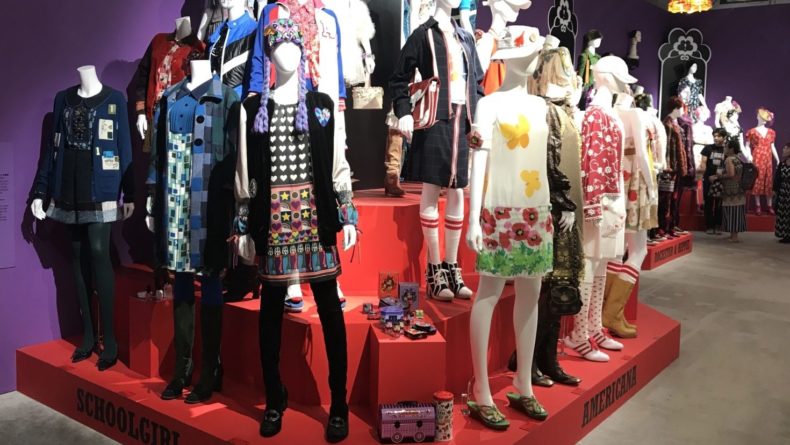
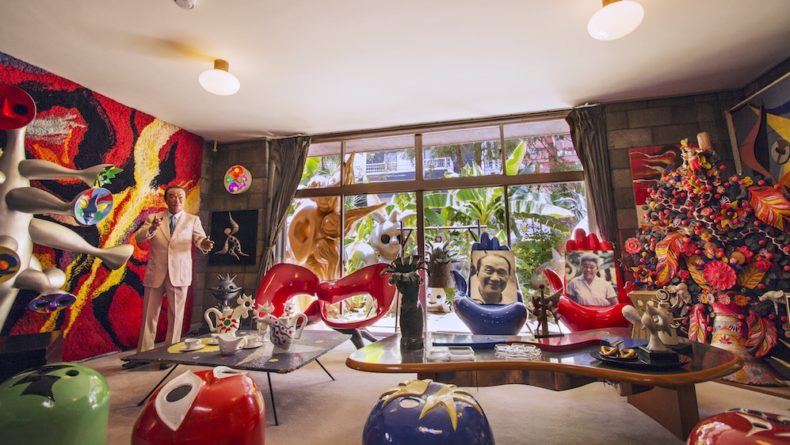
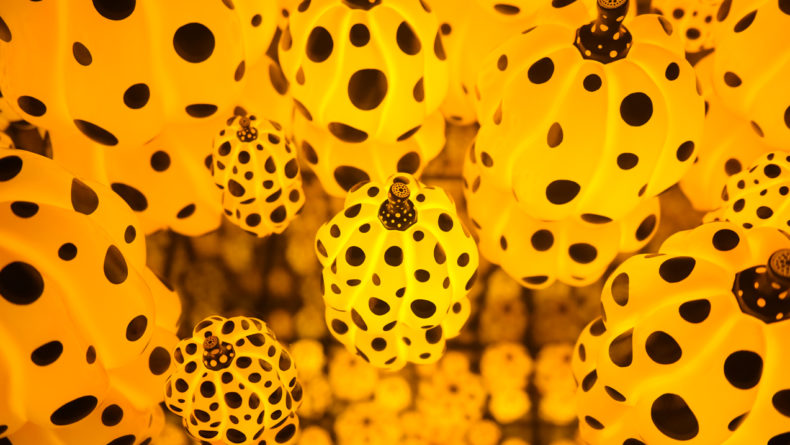
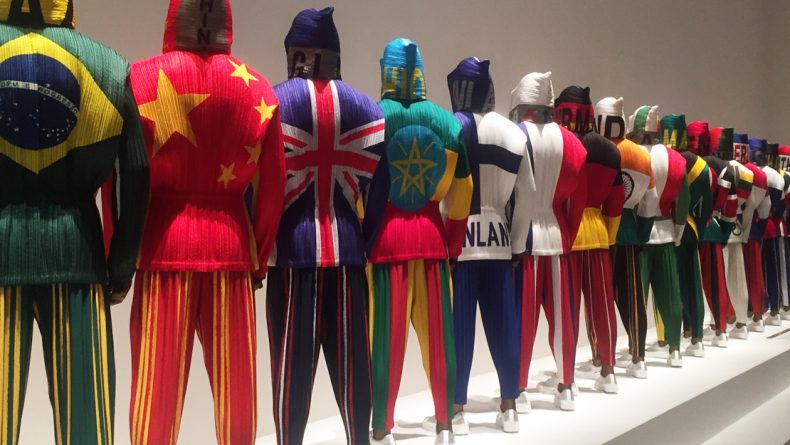
Leave a Reply